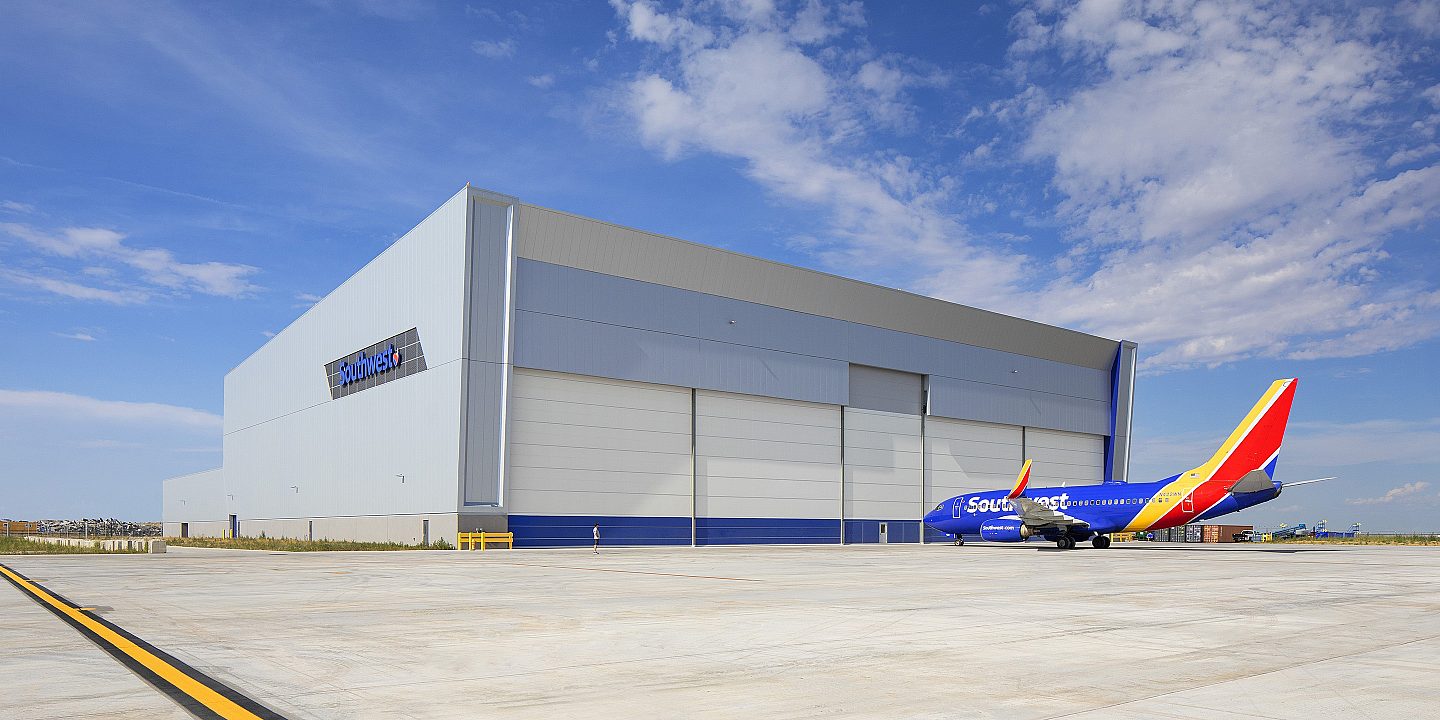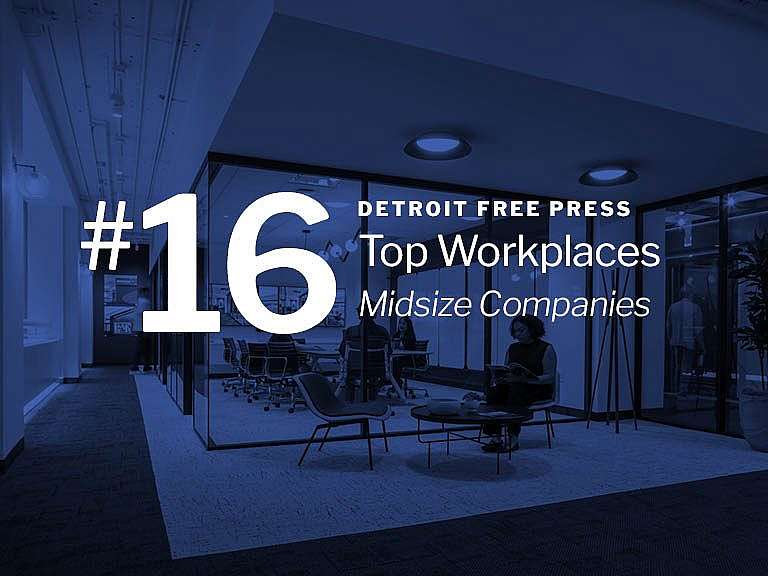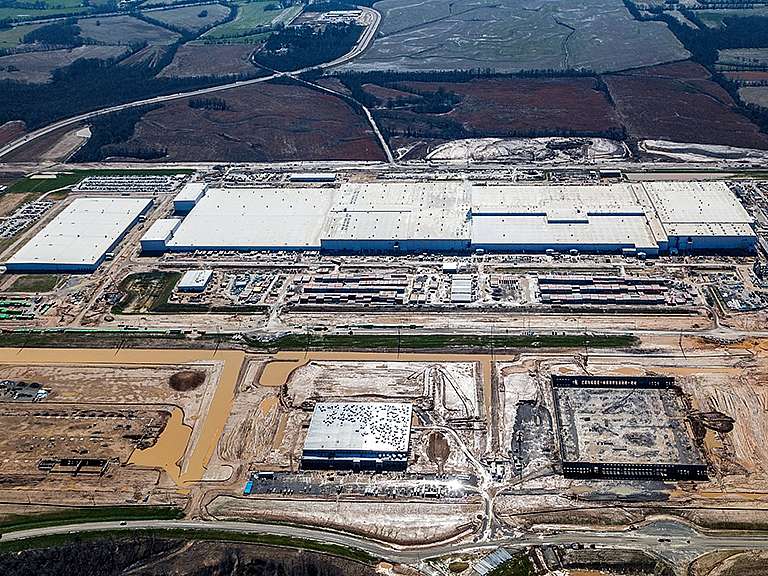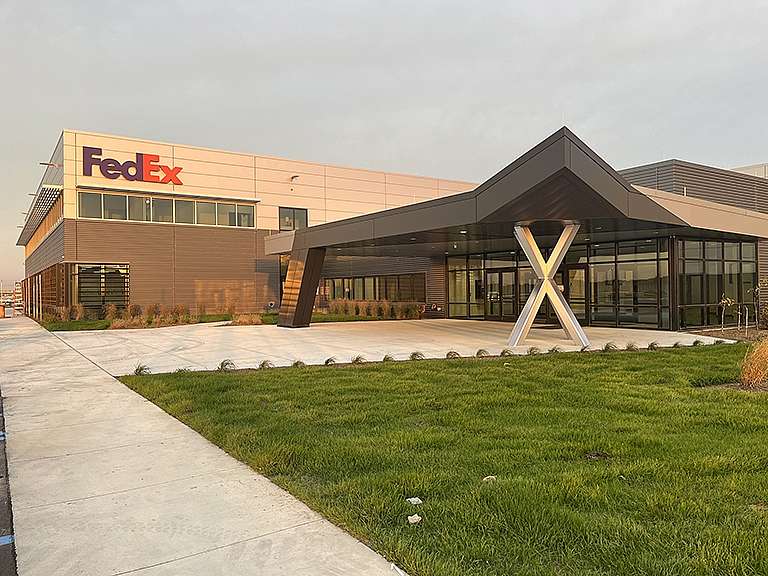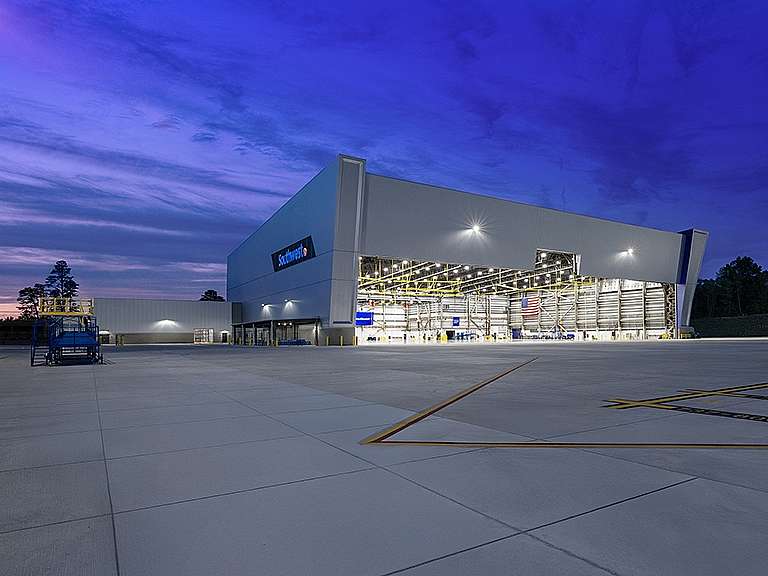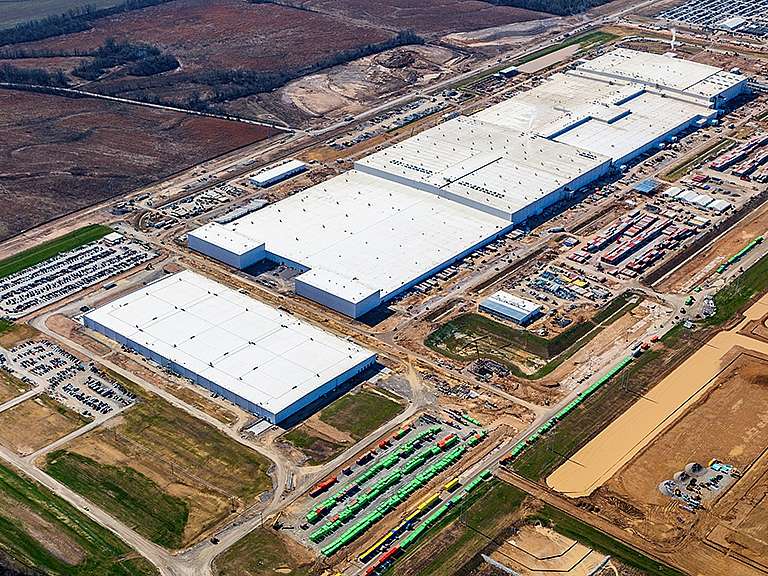Southwest Airlines Denver Maintenance Hangar Earns LEED Certification
The Southwest Airlines Maintenance Hangar at Denver International Airport was recently awarded LEED certification. This is the first Southwest Airlines hangar to be LEED certified.
Airplane hangars pose unique challenges to energy performance optimization due to the large area and clear height requirements and the sizeable wall area required for the hangar door. The Ghafari project team decided to implement overhead radiant heaters, which efficiently and evenly warm the people and objects in the hangar, even if there is an influx of cold air. The team also provided high-volume, low-speed fans, which, along with outdoor air ventilation, provide efficient cooling in the summer months. These fans may also be reversed in the winter to help de-stratify air in the hangar, pushing warmer air down to the floor level.
A five-leaf overhead hoist-up fabric hangar door was selected, which has a superior seal to alternatives, minimizing air leakage, and offers flexible operation to minimize mass air flow. The project team incorporated both translucent wall panels and translucent fabric hangar doors, providing diffuse light throughout the entire space and reducing the electrical load of the high bay light fixtures while still providing adequate light for maintenance activities.
The building envelope was designed and detailed with durable and weather-tight systems, including insulated prefabricated concrete panels, insulated metal panels, and PVC membrane roofing. Interior lighting used all LED fixtures and controls with integrated daylight and occupancy sensors for reduced energy demand, extended service life, and consistent and functional lighting. These measures, as well as an HVAC design which incorporated highly efficient equipment and controls and energy recovery, resulted in energy savings of more than 20% below reference standards.
Potable water is conserved by the use of low flow fixtures throughout the building and native plantings that do not require irrigation, addressing regional water supply concerns amidst a period of historic drought and improving the building’s resilience against future water shortages.
Learn more about this project here.
